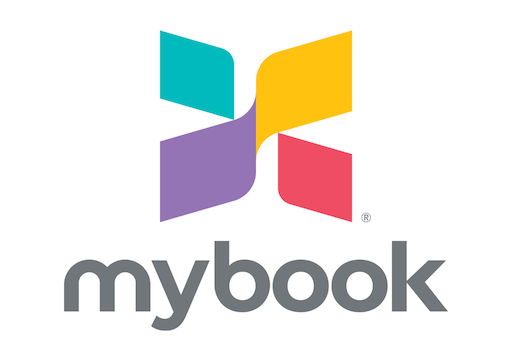
Switch Google Analytics Consultant: Your Effortless Guide to Success
Switching a Google Analytics consultant can feel like a daunting task, but with the right approach, it can become a seamless transition that leads to greater insights and success for your business. Whether you’ve outgrown your current setup or feel your goals have shifted, knowing how to properly navigate this change is crucial. Let’s dive into the steps you can take to ensure a smooth switch and maximize the value you derive from your Google Analytics installation.
Why Consider a Change?
When businesses initially set up Google Analytics, they may have chosen a consultant based on accessibility or budget constraints. Over time, needs evolve. Maybe your company has grown, or perhaps you’re now focusing on different metrics to gauge success. For instance, if your online store has expanded its product range significantly, understanding customer behavior through enhanced eCommerce tracking may become critical.
Realizing when it’s time to switch your Google Analytics consultant is more common than you think. A few telling signs might include inconsistent reporting, an inability to answer key questions, or a lack of proactive strategies that cater to your refined needs. Identifying these moments can pave the way for a more successful analytics strategy.
Step 1: Assess Your Current Situation
Before making the switch, take stock of what you currently have. What’s working? What isn’t? Speak with your existing consultant about what you’d like to improve. It’s not only a good practice but often reveals gaps and opportunities that could inform your next steps.
Consider creating a list of your analytics needs. For example, your focus on audience segmentation might require a more advanced understanding of demographic data. Understanding where you currently stand helps create a clearer picture of your expectations from the new consultant.
Step 2: Define Your Goals
Do you want to increase your conversion rates, enhance your marketing efforts, or better understand your audience? Defining your goals sets a clear direction for your new consultant. When I switched my analytics consultant, I laid out a detailed strategy in collaboration with them. It facilitated efficient onboarding and led to quick wins because we both knew what we were aiming for.
For example, if you’re running an educational website, increasing the page views on a specific course could be a goal. By communicating these goals upfront, you can find a consultant experienced in achieving similar targets.
Step 3: Research Potential Consultants
Once you know your requirements, it’s time to look for a new Google Analytics consultant. Start by checking reputable platforms like LinkedIn or consulting agencies that specialize in digital analytics. Referrals from colleagues can also be incredibly helpful.
When reviewing potential candidates, look for their portfolio and case studies. Are there any companies similar to yours they have worked with, and what were the outcomes? For instance, a consultant with a proven track record in optimizing eCommerce sites would be highly valuable for an online retailer.
Step 4: Schedule Initial Consultations
Before making a final decision, schedule consultations with your top candidates. Use this opportunity to gauge their expertise and communication style. Ask questions about their approach to customized analytics solutions and how they manage to stay updated with industry changes.
During one of my consultations, a potential consultant provided insights on integrating Google Analytics 4, which had just been launched. Their eagerness to adapt to new tools made a strong impression and solidified my decision.
Step 5: Transitioning
Once you’ve selected your new consultant, make a plan for transitioning the responsibilities. This coordinated effort may involve sharing access to your current Google Analytics account, guiding them through existing reports, and addressing any unresolved issues.
Opt for a phased transition whenever possible. This approach allows the new consultant to gain familiarity with your setup while ensuring that reporting continues without interruption.
Monitoring Progress
After making the switch, keep a close eye on how the new consultant manages your analytics. Regular check-ins can help catch any issues early.
It’s also important to set quarterly evaluations to assess the progress toward your goals. If, for example, your new consultant has made significant strides in SEO optimization, you will likely see an uptick in organic traffic that reflects their impact.
Opting to switch your Google Analytics consultant can be a transformative decision for your business. By following these steps, you ensure a successful implementation that could lead to enhanced insights and ultimately more robust growth.
—
FAQ
1. How do I know when it’s time to switch my Google Analytics consultant?
You should consider a change if you notice inconsistencies in reporting, struggle to get insights or recommendations tailored to your evolving business needs, or feel that your current analytics strategy isn’t aligned with your goals.
2. What qualifications should I look for in a new consultant?
Look for someone with experience relevant to your industry, a solid understanding of Google Analytics (especially GA4), and proven case studies where they’ve successfully met similar objectives as yours.
3. Will switching consultants disrupt my analytics data?
If done properly, switching should not disrupt your analytics data. Ensuring a smooth transition with effective communication and planning helps maintain data continuity and integrity.
Related Posts
Switch PostHog Consultant for Effortless Results
Switching your PostHog consultant could be the game-changer your business needs to unlock fresh insights and strategies. Embrace the opportunity for a new perspective, and let the right expert help you...
Switch Amplitude Consultant: Effortless Guide to Success
Unlock the potential of your business with a switch amplitude consultant, who can turn overwhelming data into clear, actionable insights. If youve ever wished for a better understanding of your customer...












